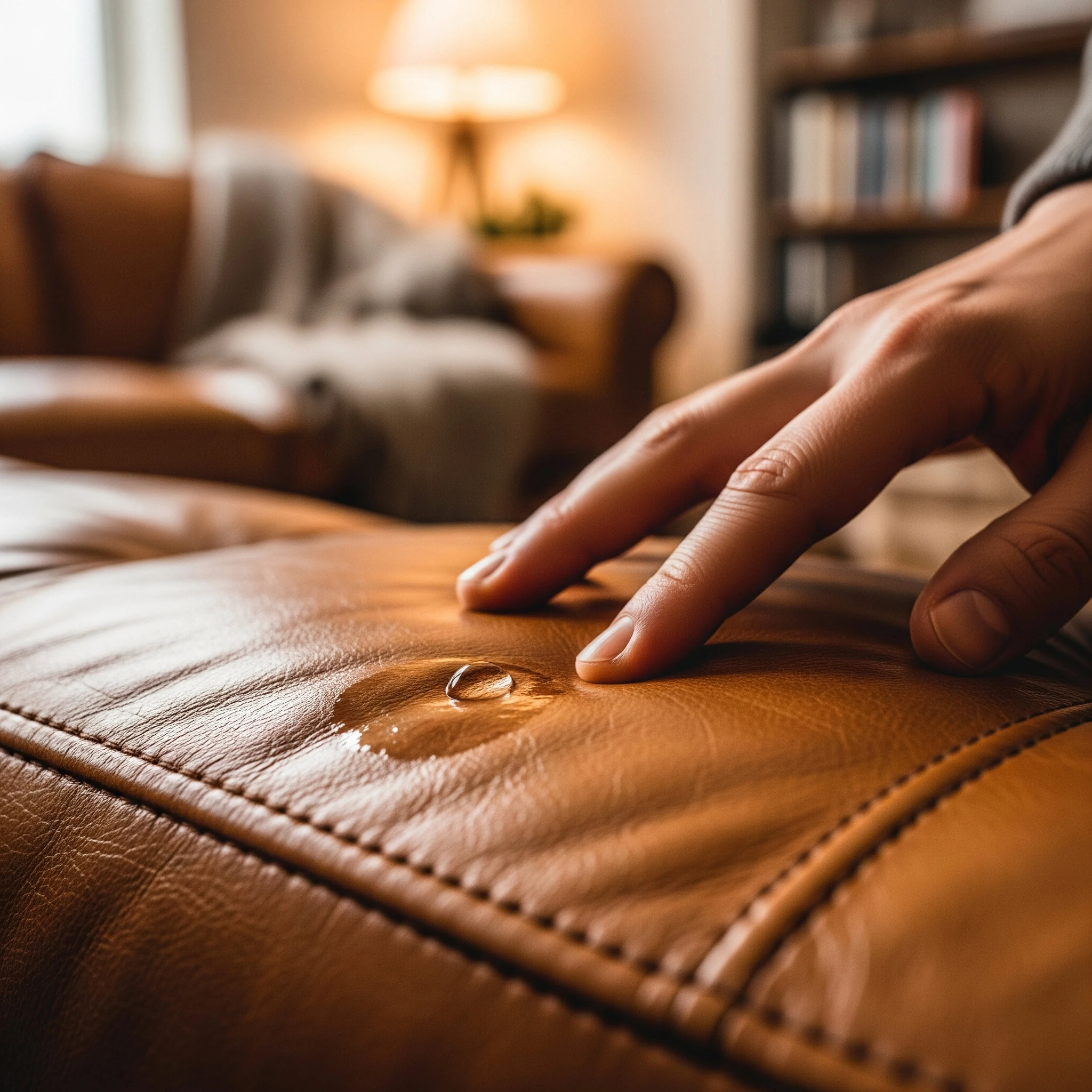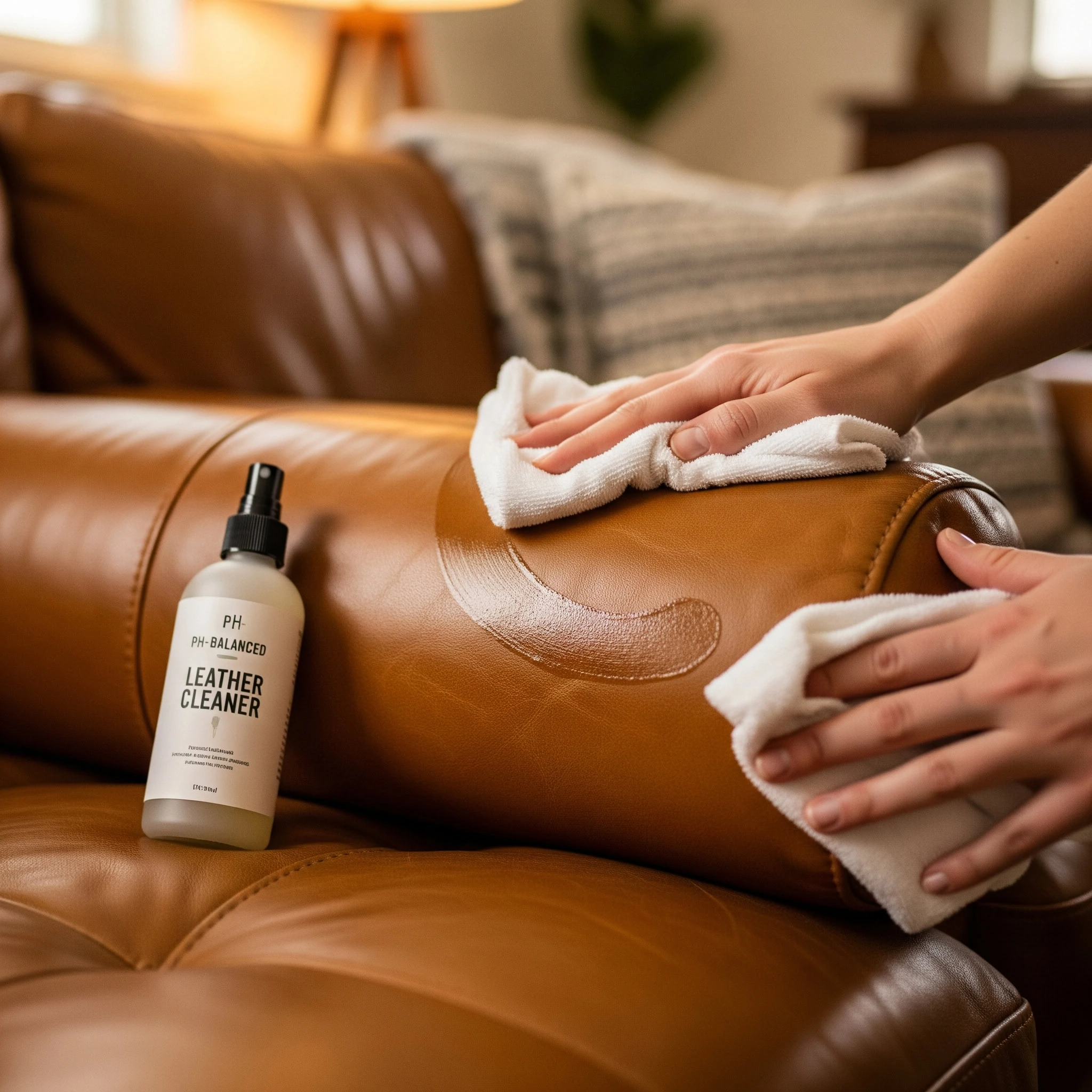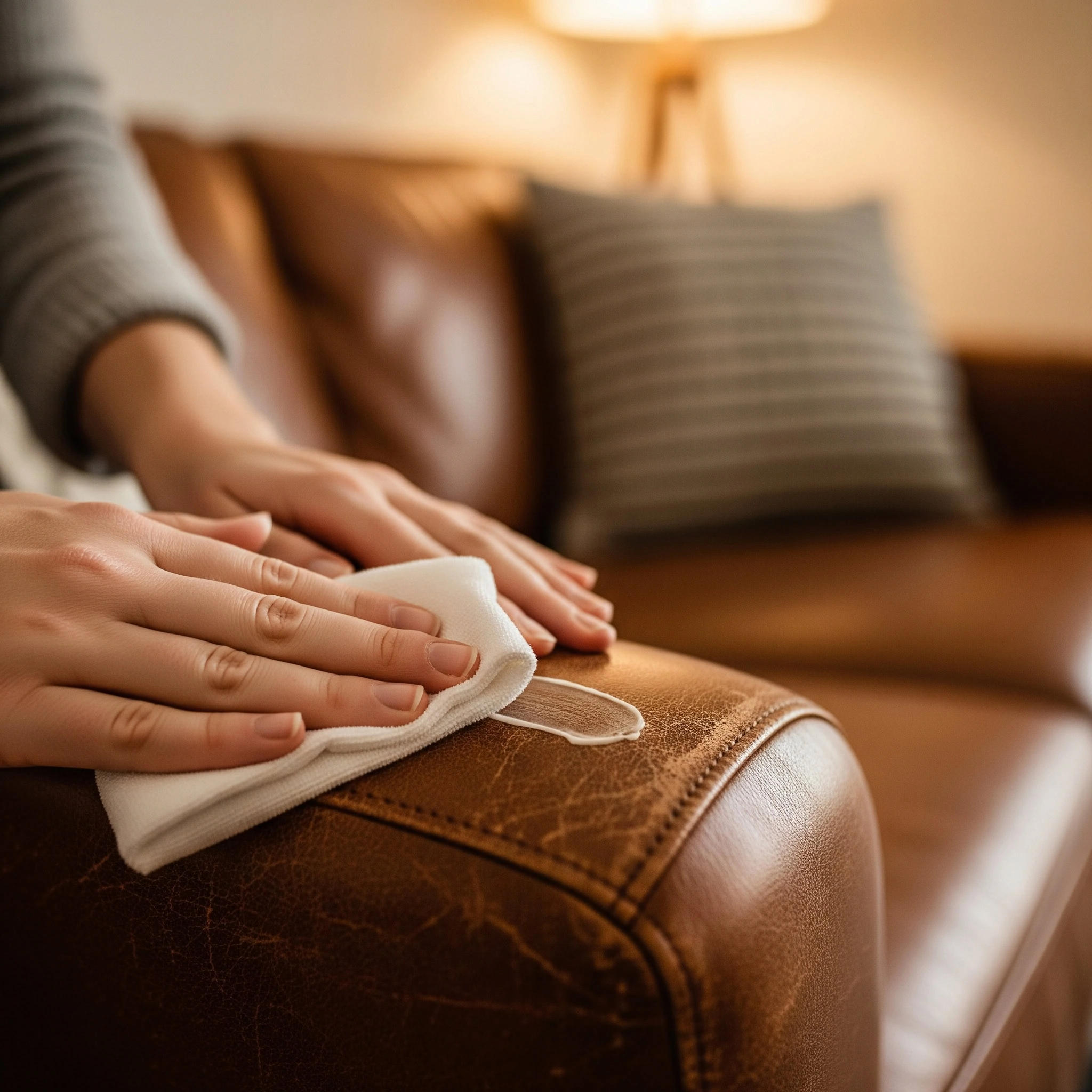Is your beloved leather couch or leather sofa showing signs of wear, with faded or discolored patches diminishing its beauty? Leather couch color restoration can breathe new life into your furniture, but it’s crucial to approach this task with the right knowledge and techniques. In this comprehensive guide, we’ll walk you through five essential tips to achieve professional-quality results while using eco-friendly methods.
Introduction to Leather Restoration
Leather restoration is a specialised process designed to repair, rejuvenate, and enhance the appearance of worn or faded leather items. Whether you’re dealing with a family heirloom leather sofa, car seats, or cherished accessories, restoring leather can dramatically improve both the look and feel of your pieces.
At the heart of this process is the use of a leather colour restorer. It’s a product specifically formulated to revive the original hue, repair minor scuffs, and restore the natural texture of the material. These restorers are suitable for a wide range of items, from sofas and chairs to bags and jackets, making them an essential tool for anyone looking to extend the life and beauty of their leather goods.

1. Assess Condition & Choose the Right Leather Colour Restorer
Before beginning any restoration work, carefully evaluate your leather couch’s current condition. Look for areas of wear and fading, type of leather finish (aniline, semi-aniline, or pigmented), existing damage or repairs, and overall color consistency.
To determine if your leather is absorbent, place a small drop of water onto an undamaged area and observe if it is absorbed. If the water soaks in, your couch is made of absorbent leather, and you should choose products specifically designed for absorbent leather. Note that certain products are not suitable for nubuck or suede finishes, so always check the material type before proceeding. This thorough assessment process is the foundation of successful leather furniture restoration, as proper identification of leather type and condition determines every subsequent step in the restoration process.
Choosing the right products is crucial for successful restoration. Opt for eco-friendly, pH-balanced solutions specifically designed for your leather type. We recommend applying the chosen product according to the manufacturer’s instructions.

2. Clean and Prep Your Leather Properly
Proper preparation is essential for optimal color uptake and lasting results. Follow these steps: first, remove any dust and surface dirt using a pH-balanced leather cleaner and a clean lint free cloth. Pay special attention to heavily soiled areas. After cleaning, wipe the leather surface with a clean, damp cloth to remove any remaining cleaner or residue. Always use a lint free cloth to avoid leaving fibers on the leather. Allow the leather to dry completely, and test products on a small, hidden area first.
Using non-toxic cleaners ensures thorough cleaning without damaging the leather’s natural properties. This step is crucial for even color absorption and professional-looking results. Whether you’re planning to leather couch color restore as a DIY project or preparing for professional treatment, proper cleaning sets the foundation for success.
For delicate or heavily soiled leather, hiring a professional leather cleaning expert is often the smarter choice. Professionals have the right techniques and tools to clean deeply without harming the material, ensuring your leather is perfectly prepped for restoration.
Dealing with Damaged Leather
When faced with damaged leather, it’s important to take a thoughtful approach to repair and restoration. Start by carefully assessing the damaged area to determine the best course of action. For minor scuffs and light scratches, a quality leather colour restorer can work wonders, reviving the colour and blending imperfections seamlessly into the surrounding leather. If the damage is more severe, such as deep cracks or tears, a leather repair kit may be necessary. These kits typically include everything needed to repair and restore the texture and appearance of the affected area, ensuring a smooth and durable finish.
Regularly caring for your leather items by cleaning and conditioning them can also help prevent future damage, keeping the leather supple and vibrant. By choosing suitable repair methods and products, you can restore your leather’s beauty and enjoy your favorite pieces for many more years.
3. Apply Color with Precision
Color application requires patience and attention to detail. Before starting, use a small drop of water to test the absorbency of the leather’s surface. For absorbent leathers, rub a small amount of leather recolouring balm or leather restorer into the leather surface using a clean cloth, working in circular motions. This balm is available in a variety of shades and colours to match the original finish, making it ideal for leather recolouring of faded or worn leather items, including sofas, shoes, and accessories. For non-absorbent leathers, a leather dye may be required for full color restoration.
For best results, work in thin, even layers and treat the entire piece to ensure a uniform appearance. Allow each layer to dry completely, and build up color gradually to match surrounding areas. The restoration process can darken faded areas, but the original colour may reappear as the product dries. After application, buff the leather surface with a clean cloth to achieve a slight shine or satin finish. Buffed leather will have a natural sheen that fades to a satin look over time.
Check for colour transfer by rubbing a clean cloth over the surface after curing, ensuring no dye or balm transfers to clothing or clothes. Avoid using excess conditioner, as it can lead to residue buildup. Leather restorer and conditioner help keep leather soft and supple, restoring the leather soft feel and extending the life of your sofa or other furniture. Leather protection cream can be applied after recolouring to protect the finish.
These techniques are suitable for various leathers, including those with minor scratches, cracked leather, worn leather, or small tears. They are also effective for restoring the appearance of shoes and other leather items. Always review product details to select the right shade and finish for your project.
However, it’s important to consider the risks of DIY recolouring, as poor technique can lead to blotchy, cracked, or uneven results. To better understand these potential issues, read more about the risks of DIY leather recolouring, and why hiring a professional is often the safer choice.

4. Seal and Condition for Longevity
Protecting your newly restored color is crucial for long-lasting results. Apply an eco-friendly leather sealer, use appropriate conditioning products, allow proper curing time, and ensure adequate ventilation during the process.
“Professional-grade sealers create a protective barrier while maintaining the leather’s natural feel,” explains our restoration team. This step is vital for protecting your investment and extending the life of your restoration work.
5. Establish a Maintenance Routine for Leather Furniture
Regular maintenance prevents future color degradation. Clean spills and remove stains immediately using a clean cloth, use appropriate leather cleaners monthly, apply conditioner quarterly, keep furniture away from direct sunlight, and schedule professional inspections annually.
Common Mistakes to Avoid
Avoid using household cleaners or DIY solutions, skipping the preparation phase, rushing the application process, neglecting to test products first, and over-conditioning the leather.
Conclusion
Successful leather couch color restoration requires careful preparation, the right products, and proper technique. While these tips can help you achieve good results, remember that professional services are available when needed. For complex restoration projects or valuable pieces, consider consulting with experienced restoration specialists.
Ready to bring your leather back to life? Whether your couch needs a complete colour transformation or just some expert TLC, LeatherXpert’s master craftsmen are standing by to work their magic. Request a quote today and let’s turn that worn-out leather into the centerpiece your room deserves.
FAQ – Leather Restoration
How can I restore the color to my leather couch?
You can restore color to a leather couch by following a process of assessment, cleaning, application of a leather colour restorer or dye (matched to your couch’s specific type and color), and finally, sealing the finish. The key is using the right products for your leather’s absorbency and following each step meticulously.
Why is the color coming off my leather couch?
Color typically comes off a leather couch due to one of two reasons: delamination (where the top finish layer peels away from the base leather, often due to poor manufacturing or harsh cleaners) or wear-and-tear from abrasion, body oils, and sunlight breaking down the finish over time. Proper conditioning can help prevent this.
Do leather recoloring balms work?
Yes, high-quality leather recoloring balms are highly effective for restoring color to faded, absorbent leather. They are designed to penetrate the leather’s surface, replenishing the original color and masking light scratches. Their effectiveness depends entirely on correct leather type identification and proper application technique.
How long does a DIY leather couch color restoration last?
The longevity of a DIY restoration depends heavily on the quality of the products used, the preparation, and the amount of wear the couch receives. A well-executed DIY job using high-quality restorers and sealers can last 1-3 years before showing significant signs of wear. For a longer-lasting solution, professional restoration uses industrial-grade dyes and sealants that can last 5-10 years or more, making it a more durable investment for heavily used furniture.
